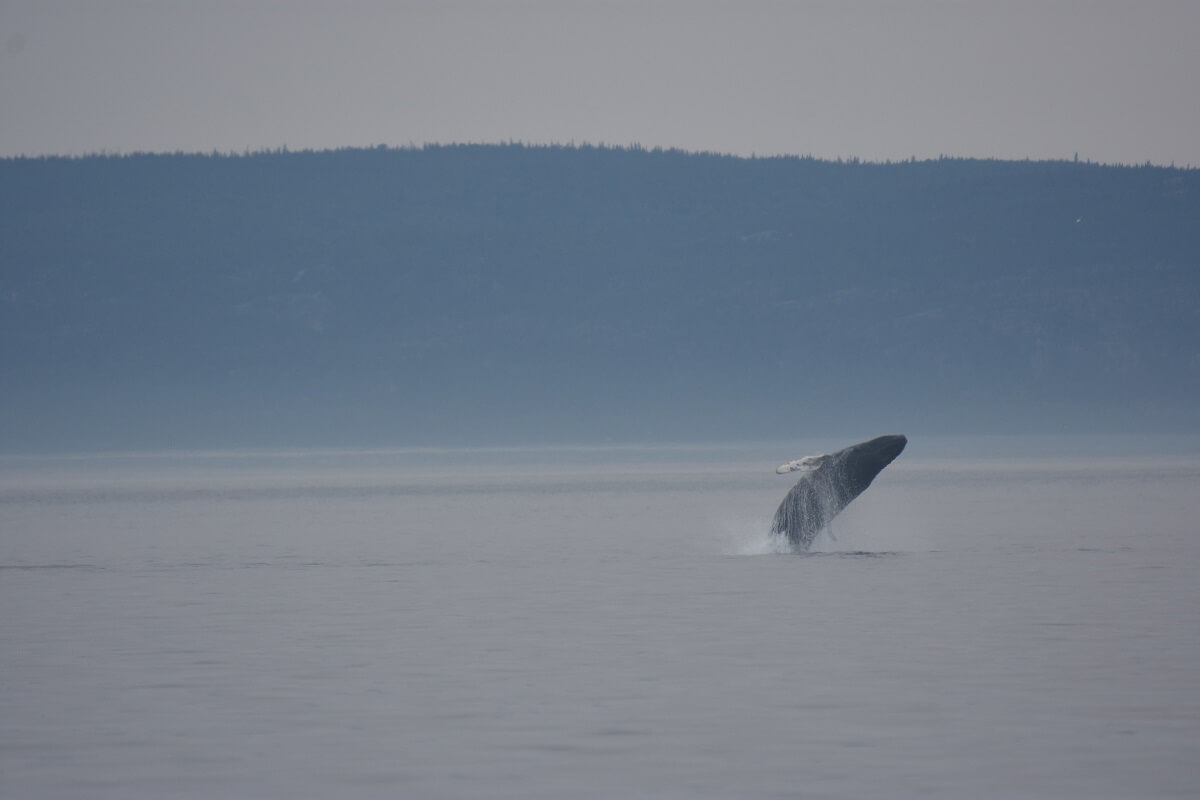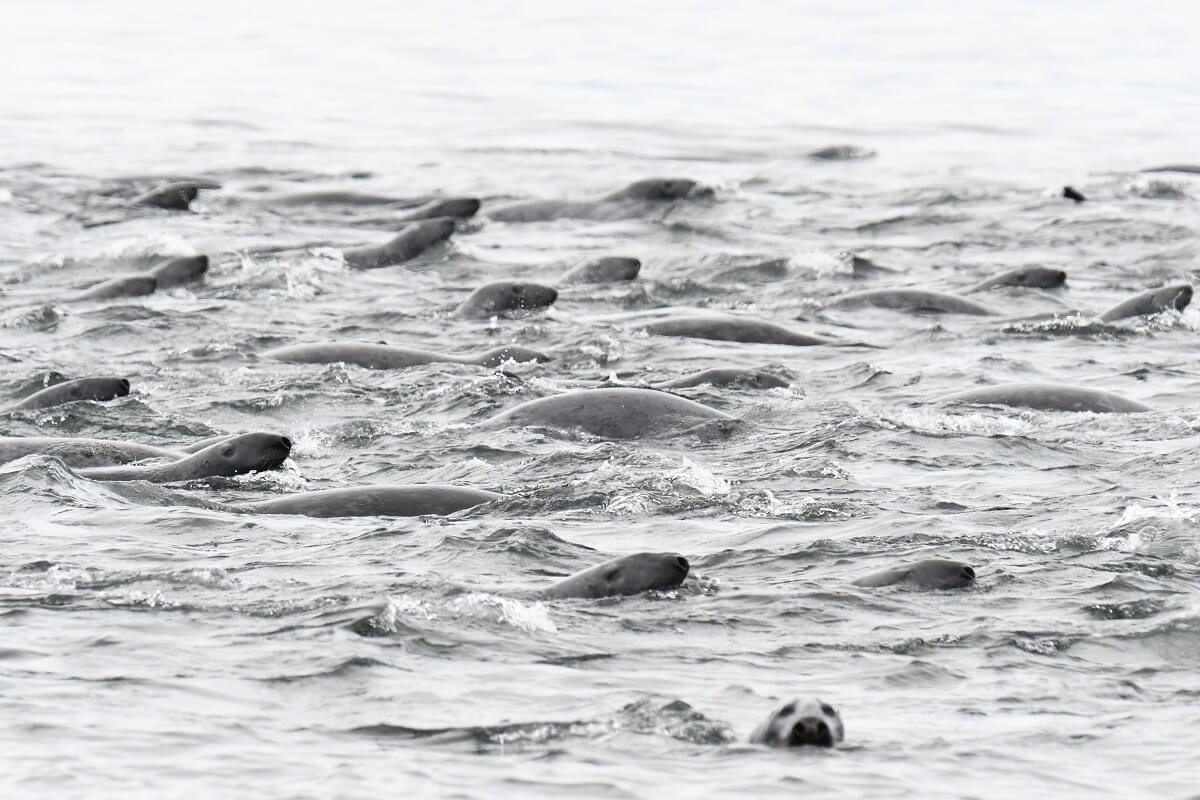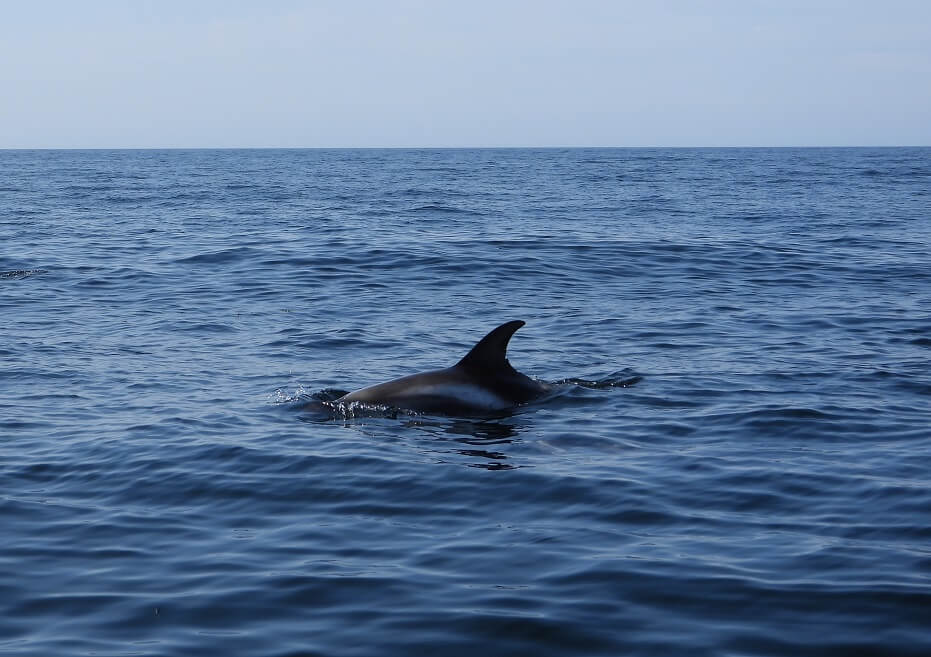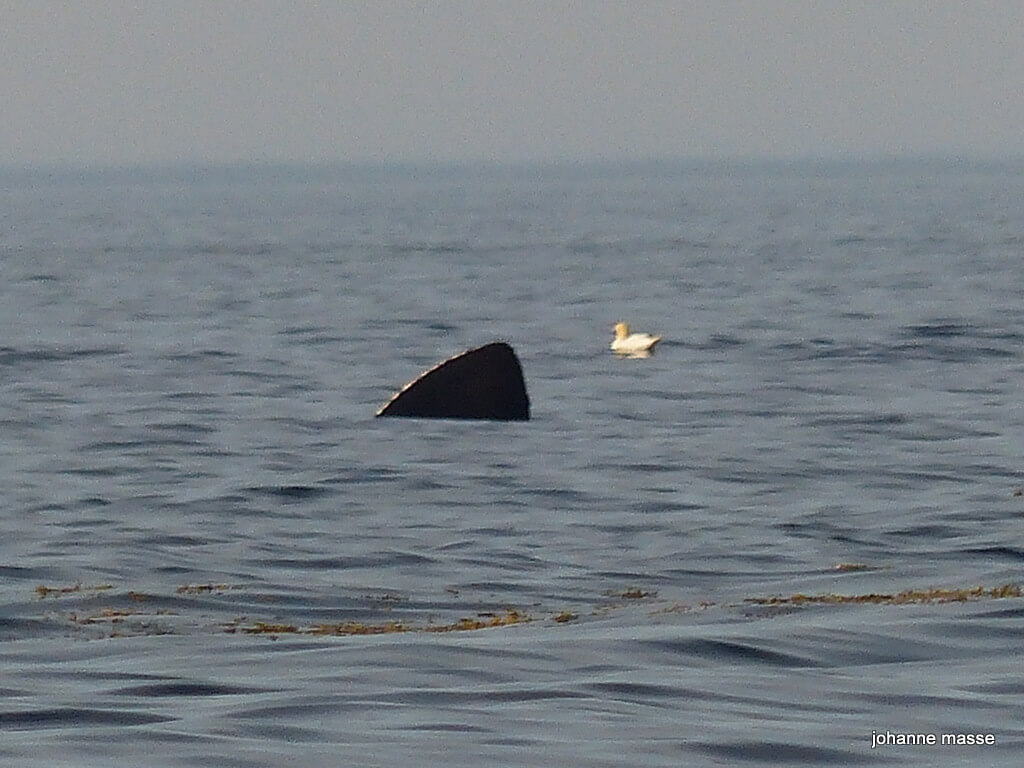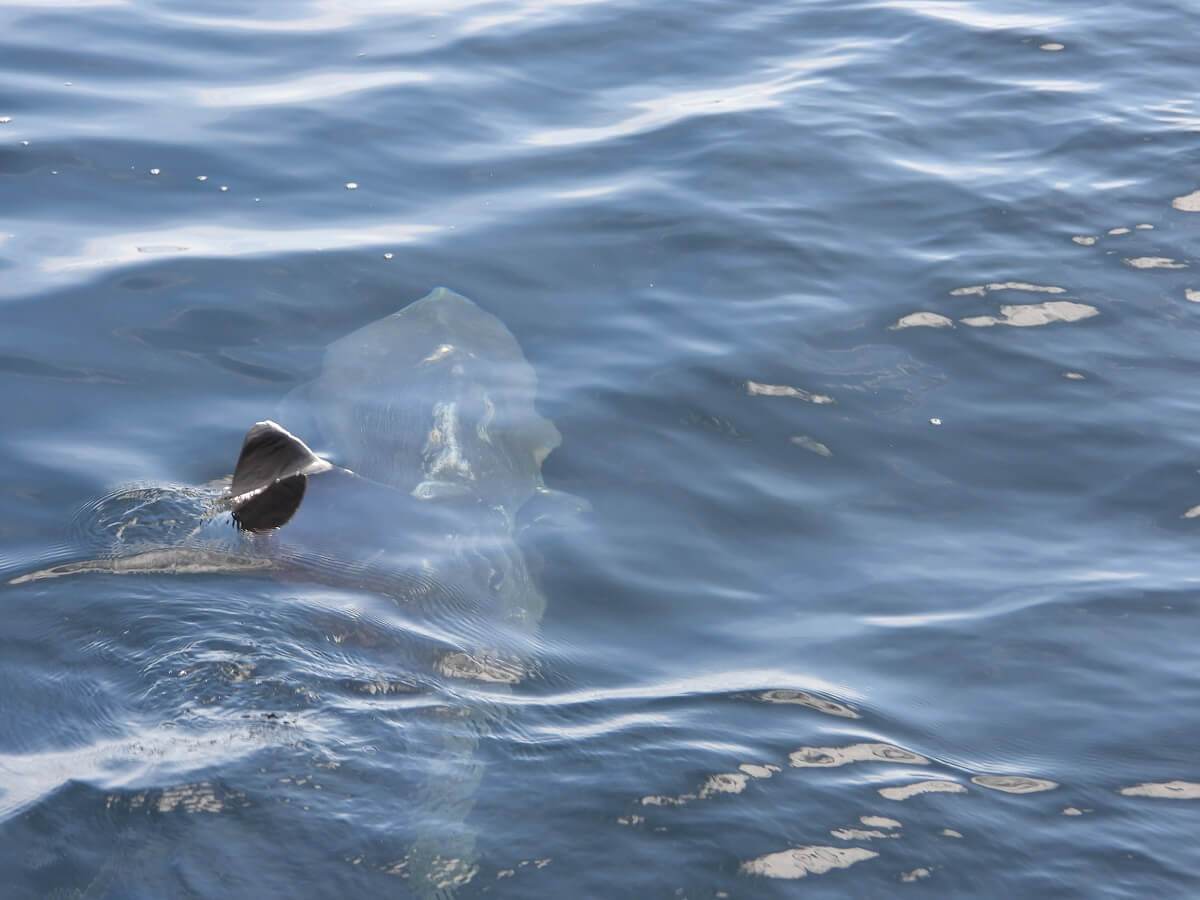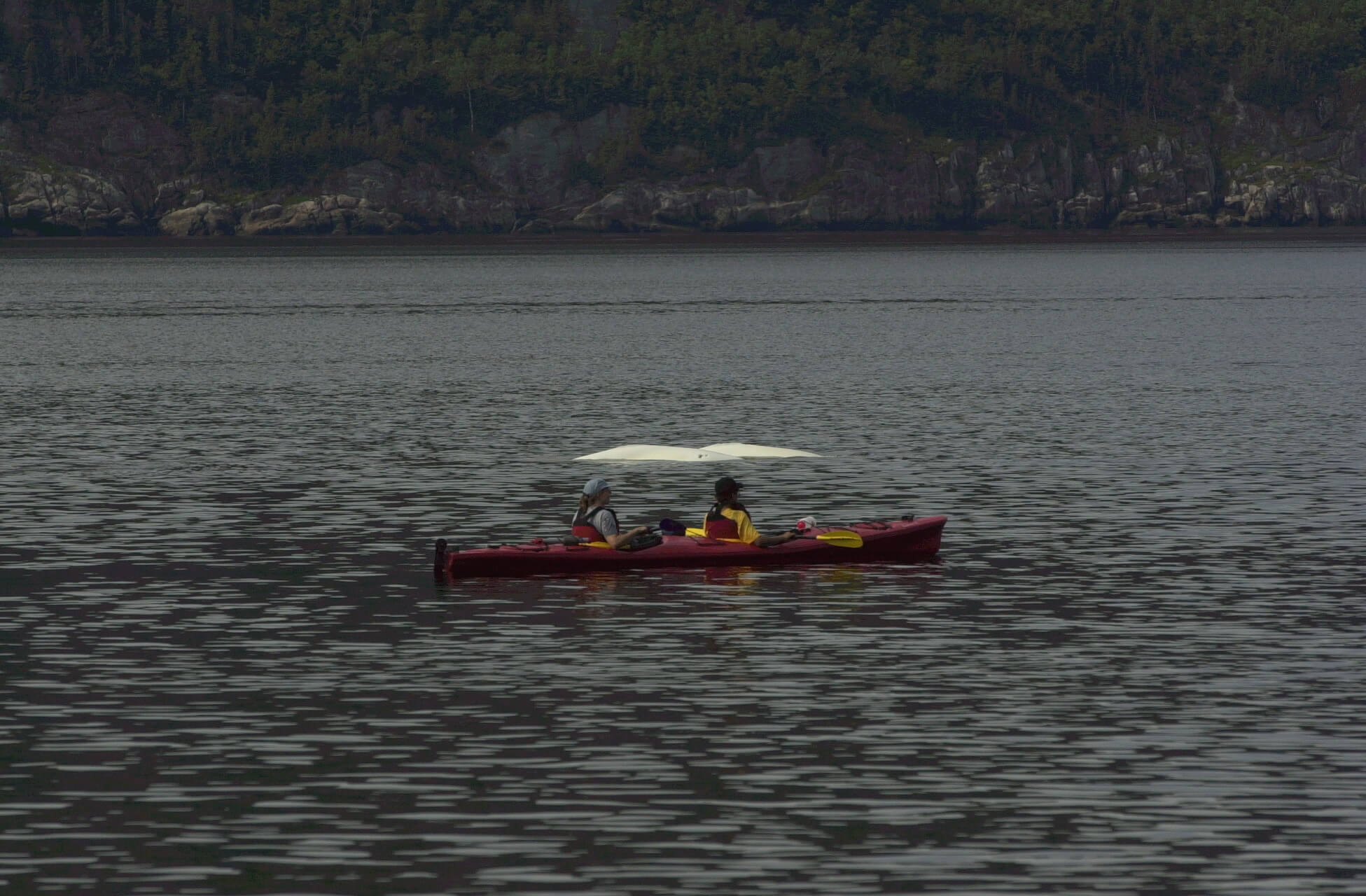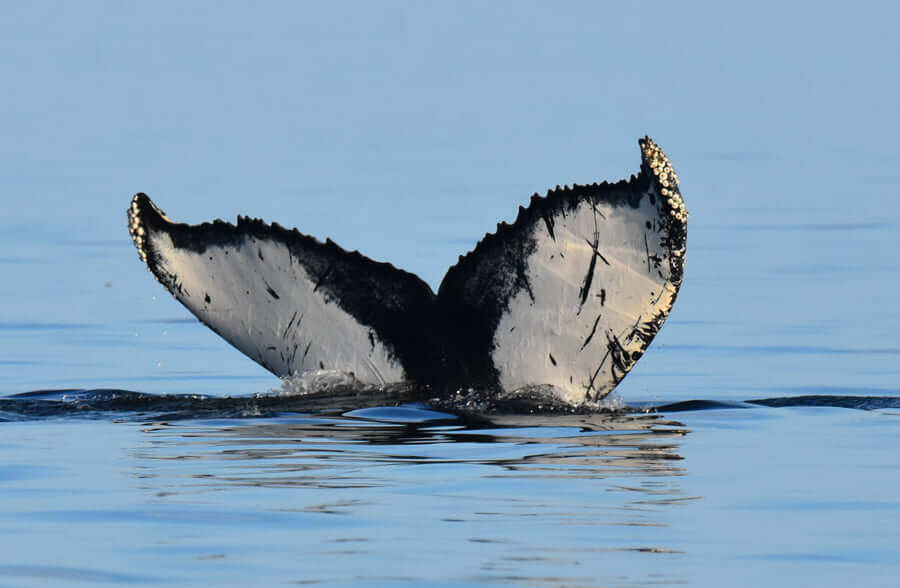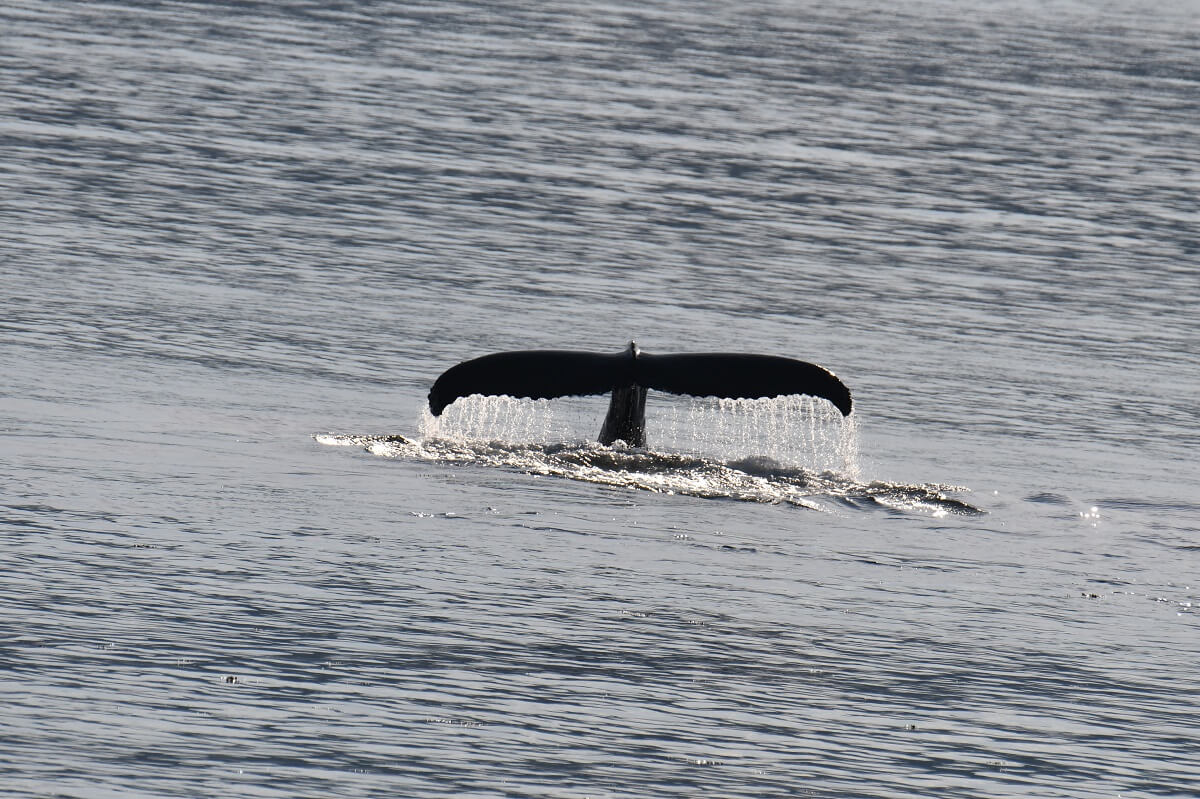Whether you’re on the shores of the St. Lawrence or sailing in its waters, there’s always a chance for a surprising encounter. It could be an ocean sunfish gliding below the surface, beyond the mouth of the Pontbriand River, white-beaked dolphins leaping out of the water northwest of Anticosti Island, a herd of over a hundred grey seals splashing at the surface near Tadoussac, or the fleeting glimpse of a narwhal observed through binoculars from the campground in Saint-Siméon.
In the early morning hours of Sunday, July 18, a resident of Cloridorme is intrigued by an animal she spots offshore. “At first I thought it was the dorsal fin of a whale, but it was more triangular in shape and there was something different about the way it moved.” Surprise: it’s not a whale fin, but a shark fin, more precisely that of a foraging basking shark. “It swam in circles opposite our home for a long time, and later that evening, it was visible from the Cloridorme docks,” tells the Gaspé Peninsula native. No doubt it had its own thoughts about how to mark “Shark Week”.
Sharing the water
During a stand-up paddleboard trip in the Mingan Archipelago, an outdoor guide is excited about the many encounters the group had with marine mammals. “On Sunday, we had an awesome experience between Grosse Île au Marteau and Havre-Saint-Pierre: several minke whales were all around us, and one of them even surfaced just 15 metres from one of our participants.” A nice surprise, but what is the correct thing to do in such a situation?, wonder the paddlers. For boating and paddling activities that take place in whale habitat, a free online training course has been developed to provide users basic rules of thumb to enjoy being out on the water while treating marine mammals with respect and complying with regulations.
Because sometimes the situations can be complex. While out on the Saguenay Fjord on Sunday, more precisely at Anse de Roche, a kayaker suddenly hears an animal exhale behind him. A large white back emerges a few metres from his kayak before diving below the dark surface; then, a white face appears just below the craft, investigating the human intruder in its territory.
The kayaker is moved by the encounter. Unfortunately, the accumulation of these incidents can be harmful for belugas, which can abandon their essential activities such as feeding, reproduction or caring for young in order to interact with watercraft. Therefore, even if a beluga should approach, it is important to actively move away, just as the kayaker did that day. After a few minutes, the white whale resumed its journey toward Baie Sainte-Marguerite.
Belugas were present almost daily in the Saguenay this past week. “They are generally in small groups that swim up and down [the Fjord] as a function of the tides, along the opposite shore, toward L’Anse-Saint-Etienne,” says a resident of L’Anse-de-Roche. “But on Sunday, there was a very large group spanning the width of the Saguenay, with several smaller grey backs in the mix. Unfortunately, several boats passed through or stopped nearby to watch.” So let’s be reminded once again that to protect belugas, we have to give them their space!
Noteworthy arrivals
There is plenty of open space in the Saguenay-St. Lawrence Marine Park, and it’s teeming with whales! At least ten fin whales have been feeding in the Estuary, several of which have been identified: Ti-Croche, Boomerang, Piton, Bp972… Two known humpbacks, H944 and H930, were observed for the first time on Monday, joining H858 (a.k.a. “Queen”), H859, H887 as well as Gaspar and her calf in the waters of the St. Lawrence. “I’m up to 15 humpbacks photographed since the start of the season,” says photographer Renaud Pintiaux. From a campsite in Les Bergeronnes, several large blasts erupt at daybreak on Saturday morning.
In the Mingan Archipelago, in addition to porpoises and grey seals in numbers – not to mention the growing presence of recently fledged Atlantic puffins – observers have been noting many minke whales. Large rorquals remain scarce, however. However, the Mingan Island Cetacean Study has encountered and biopsied a new, hitherto unknown humpback whale off the coast of Havre-Saint-Pierre. At Longue-Pointe-de-Mingan, a mother and a calf were spotted near the coast. The researchers also believe they saw a V-shaped spout, which is a telltale sign of a right whale, but could not get a visual confirmation.
North of the Gaspé Peninsula, René Roy is stupefied: “The animals are in clusters and very localized. I sailed for hours and hours without seeing anything, and then, all of a sudden off Rivière-au-Renard, there are 12 humpbacks, 15 fin whales, a basking shark, bluefin tuna, all in the same spot! And still no blue whales!”
Black and blue in the waters of the Gulf
Thanks to aerial and acoustic surveys carried out by Fisheries and Oceans Canada teams, a strong presence of right whales has been detected east of Chaleur Bay, which most likely includes two entangled individuals. These animals are actively being searched for by response teams in an attempt to free them from their ropes. This interactive map also reveals the presence of one or more blue whales in the heart of the Gulf, in the corridor between the tip of the Gaspé and Anticosti Island.
Where are the whales this week?
These observations give an idea of the presence of whales and do not represent the real distribution of whales in the St. Lawrence. Use them for fun!
Click on the whale or seal icons to discover the species, the number of individuals, additional informations or photos of the sighting. To enlarge the map, click on the icon in the upper right corner. The map works well on Chrome and Firefox, but not so well on Safari.
To display the list of sightings, click on the icon in the upper left corner.


